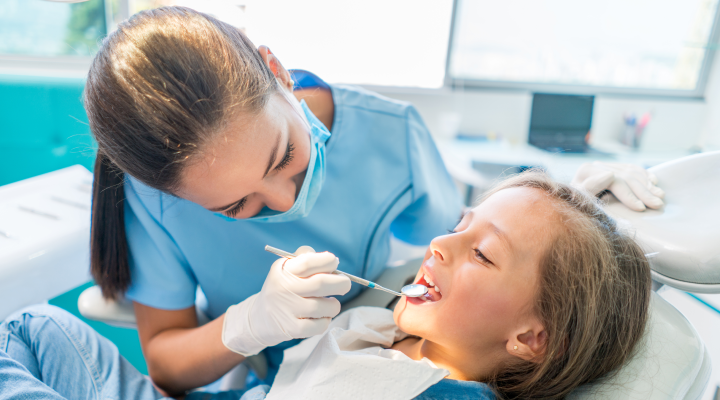Do you have a parent or loved one who lives in a care facility or utilizes assisted living? Whether it’s your in-laws, parents or an aging family friend, you want to be there to support their overall health and well-being. Sometimes distance or hectic schedules can make it difficult to have a watchful eye on your loved one’s wellness.
Oral health can be easily overlooked until dental issues become painful and severe—especially in long-term care facilities. Here are five key questions you can ask the team at your loved one’s nursing home or assisted living facility to ensure their oral health is a priority:
What policies are in place to ensure residents are following their daily oral health care routine?
- This will vary by facility. Assisted living facilities providing limited care and a focus on independent living, for example, may not provide daily reminders to residents about brushing and flossing. Skilled-nursing facilities may include brushing and flossing as part of residents’ morning and bedtime routines.
- The guidelines for brushing and flossing for older adults is the same: Brush for 2 minutes twice a day with a fluoride toothpaste and floss daily.
What assistance is provided to residents who are unable or unwilling to properly brush and floss?
- For older adults with poor hand coordination or a condition like arthritis that affects manual dexterity, brushing and flossing may be uncomfortable or difficult. Electronic toothbrushes are often easier to grip and can make brushing easier.
- Older adults with dementia often neglect their oral health care and can be resistant to help. Find out what solutions are in place to ensure good dental health in these situations.
- Specialized oral hygiene products may be available to make it easier to brush and floss effectively.
Are dental devices, such as dentures, cleaned and maintained?
- Failure to properly care for dentures could result in discomfort or infection. Make sure the care team knows how to care for dentures and that dental checkups are provided periodically to ensure a proper fit.
Do residents have access to regular oral health care from trained dental professionals?
- Federal law requires long-term care facilities to provide residents with preventive and emergency dental care. Each facility should have an agreement with a dental professional to deliver oral health care services and make referrals.
- Some care facilities will have a dental provider visit twice a year to perform examinations on older adults who have limited mobility. Others take patients to the dentist. See what the set-up is for your loved one.
How often do residents receive a dental exam and/or cleaning?
- Most people should visit the dentist for an exam and cleaning 1-2 times a year. People with poor oral health or specific health conditions may require more frequent dental visits.
- Dry mouth, tooth decay, tooth loss, and tooth sensitivity are common problems older adults experience that may require extra attention from a dental professional.
It’s also a good idea to check in with your loved one’s care team periodically for updates on their oral health. Ideally, you’ll be able to do this in person and work with the staff to set up or continue a dental care routine that your loved one can easily participate in. This may include scheduling dentist visits for the year and determining how they will get to those visits. If transportation is not available, consider alternative resources. Eldercare Locator is a public service supported by the U.S. Administration on Aging. It can connect you and your loved one with transportation services to get them to their dentist and doctor appointments.
Maintaining oral health at any age is an ongoing practice. Make sure your loved one’s smile is being cared for on a daily basis.









